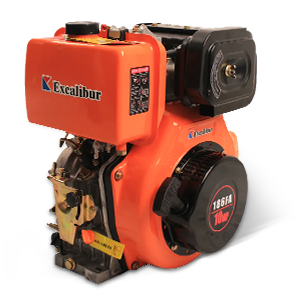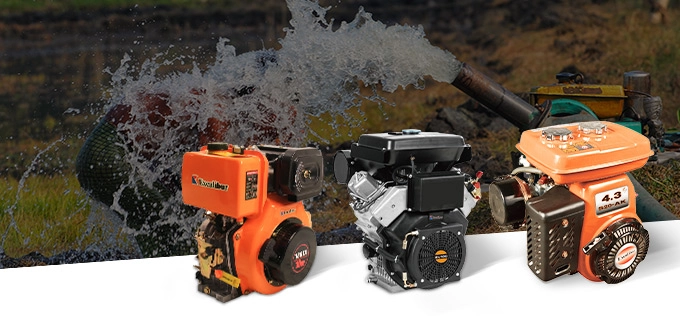Top 10 Silent Gasoline Generators for Home and Outdoor Use
Product Trend Because of their mobility, fuel economy, and quiet operation, silent gasoline generators are becoming more and more popular. They are perfect for outdoor activities like camping and tailgating as well as providing backup power for homes during blackouts. The trend is moving towards more advanced features such as eco-mode for better fuel efficiency, parallel capabilities for increased power output, and user-friendly interfaces with LED displays and USB ports for charging electronics. When it comes to reliable and quiet power sources, silent gasoline generators are a top choice for many homeowners and outdoor enthusiasts. These generators supply the required electricity to power important appliances without the bothersome noise commonly associated with conventional generators. In this article, we will explore the top 10 silent gasoline generators that are perfect for both home and outdoor use. Top 10 Quietest Gasoline Generators Generator Model Noise Level (dBA) Peak Power (Watts) Continuous Power (Watts) Runtime (Hours) Weight (lbs) Special Features Honda EU2200i 48-57 2200 1800 8.1 47 Fuel efficient, lightweight Yamaha EF2000iSv2 51.5-61 2000 1600 10.5 44 Long runtime, compact size WEN 56200i 51 2000 1600 6 48 Overload protection, low-oil shutdown Generac GP3000i 50-60 3000 2300 5.8 59 PowerRush technology, high starting capacity Westinghouse iGen2200 52 2200 1800 12 46 Eco-mode, LED display Champion 2000-Watt Inverter 53 2000 1700 9.5 39 Stackable design, versatile Briggs & Stratton P2400 58 2400 1800 8 55 USB port, LCD display A-iPower SUA2000iV 58 2000 1600 9 46 Built-in fuel gauge, low-oil shutdown Pulsar PG2000iSN 59 2000 1600 8 47 Parallel capability, stable sine wave technology Excalibur S7500CXS Series 65 7500 7000 10 220 High power output, 16 horsepower engine Honda EU2200i The Honda EU2200i is well known for its dependability and quiet running. Being among the quietest generators available on the market, its noise level is only 48 to 57 dBA. With its peak power output of 2200 watts and constant power output of 1800 watts, it is perfect for supplying electricity to both indoor and outdoor appliances. Its lightweight design and fuel efficiency make it a favorite among users. Yamaha EF2000iSv2 The Yamaha EF2000iSv2 is another excellent silent gasoline generator.It can generate 2000 watts of peak power and 1600 watts of continuous power while operating at a noise level of 51.5 to 61 dBA. This generator is known for its long runtime, capable of running for up to 10.5 hours on a single tank of gas. Its compact size and portability make it perfect for camping and outdoor activities. WEN 56200i An affordable solution that maintains performance is the WEN 56200i. It provides 2000 watts of peak power and 1600 watts of continuous output while operating at 51 dBA of noise. In addition to its lightweight and portability, this generator boasts features like overload protection and low-oil shutdown that guarantee dependable and safe operation. Generac GP3000i The Generac GP3000i is a powerful yet quiet generator, producing 3000 watts of peak power and 2300 watts of continuous power. Its noise level ranges from 50 to 60 dBA, making it suitable for home backup and outdoor use. With the generator’s enhanced PowerRush technology, you can power many gadgets at once because it has a higher beginning capacity. Westinghouse iGen2200 The Westinghouse iGen2200 is a highly efficient and quiet generator, operating at a noise level of 52 dBA. Its power output is 1800 watts in constant state and 2200 watts at peak. This generator features an eco-mode for improved fuel efficiency and an LED display that shows the remaining runtime and fuel level. It is portable because of its ergonomic grip and lightweight construction. Champion 2000-Watt Stackable Portable Inverter Generator The Champion 2000-Watt generator is a versatile and quiet option, with a noise level of 53 dBA.It produces 1700 watts of continuous power and 2000 watts of peak output. Its stackable design, which lets you combine it with another unit for higher power output, is one of its best qualities. Briggs & Stratton P2400 PowerSmart Series The Briggs & Stratton P2400 is a reliable and quiet generator, operating at 58 dBA. It can provide 2400 watts of electricity at its peak and 1800 watts of continuous power. This generator includes a USB port for charging electronic devices and an LCD display for monitoring power usage. It is a well-liked option for camping and tailgating because of its small size and simple-to-start engine. A-iPower SUA2000iV The A-iPower SUA2000iV is a cost-effective silent gasoline generator, operating at 58 dBA. The gadget can consistently provide 1600 watts of electricity, with a maximum power output of 2000 watts. For enhanced convenience and security, this generator has a low-oil shutdown and an integrated fuel gauge.This item’s compact dimensions and lightweight construction make it easy to store and travel. Pulsar PG2000iSN The Pulsar PG2000iSN is a reliable and quiet generator, with a noise level of 59 dBA.It provides 1600 watts of continuous power and 2000 watts of peak output. Because of its parallel capabilities, you may link this generator to another one to boost its production of electricity. Its stable sine wave technology ensures safe operation of sensitive electronics. Excallbur S7500CXS Series The S7500CXS Series is a versatile, quiet generator with an operating noise of 65 dBA. The gadget can consistently provide 7,000 watts of electricity, with a maximum power output of 7,500 watts. This generator is equipped with a 16 horsepower output horsepower, which can generate enough power in a short time, making it an excellent choice for quiet occasions. Choosing the Right Silent Gasoline Generator When selecting a silent gasoline generator, there are several factors to consider: Noise Level: The primary advantage of silent gasoline generators is their quiet operation.For the least amount of disturbance, look for generators with noise levels around 60 dBA. Power Output: Choose a generator with sufficient peak and continuous power to meet your needs. Take into account the wattage needs of the devices and appliances you intend to power. Fuel Efficiency: Generators with eco-mode or automatic idle features can help extend runtime and reduce fuel












